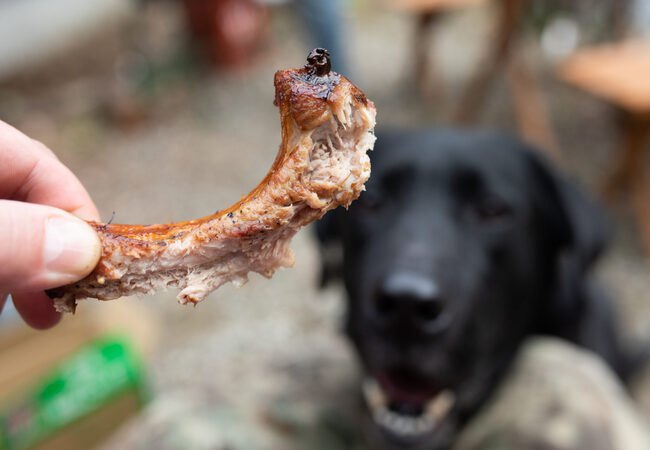What to Do If Your Dog Ate a Chicken Bone: A Vet’s 2025 Guide ⚠️🐶

In this article
What to Do If Your Dog Ate a Chicken Bone: A Vet’s 2025 Guide ⚠️🐶
By Dr. Duncan Houston BVSc
1. Why Chicken Bones Are Dangerous
Cooked chicken bones are brittle and splinter easily, posing serious threats like choking, mouth injuries, gastrointestinal perforation, and internal blockages.
Raw bones may be harder and less likely to splinter, but they still carry serious risks—so feeding any chicken bones is not advised.
2. Immediate Steps to Take
- Stay calm: Panicking can alarm your dog and make the situation worse.
- Remove any bone from mouth: Only do so if safe; avoid forcing it out.
- Offer soft bread + water: Bread may cushion splinters; water supports digestion.
- No induced vomiting: Vomiting may worsen internal damage.
3. Monitor for Warning Signs
Watch closely for symptoms over the next 24–72 hours:
- Choking, gagging, drooling, or retching
- Vomiting (with or without blood) or diarrhea/bloody stool
- Abdominal pain, bloating, straining to defecate
- Lethargy, loss of appetite, or unusual behavior
- Coughing, difficulty breathing, or weakness.
4. Veterinary Assessment & Treatment
If you see warning signs—or simply want reassurance—visit your vet promptly. They’ll perform:
- Physical exam for pain or distress
- X‑rays or endoscopy to locate bone fragments
- IV fluids to protect GI tract and aid in disposal
- Probiotics and a gastrointestinal diet to reduce inflammation
- Surgery for obstructions or perforations, and antibiotics if infection arises.
Smaller dogs face higher risks due to narrow GI tracts.
5. Home Care Following Incident
- Continued monitoring for three days if vet gives approval
- Feed a bland diet (e.g., boiled chicken & rice or GI‑specific food)
- Ensure hydration—use water fountains or ice broth treats
- Administer any vet-prescribed meds or probiotics as recommended
- Track stool quality and behavior daily, and report concerns promptly
6. Prevent Future Accidents
- Never give cooked bones—chicken, turkey, or pork
- Use secure trash containers and counter barriers
- Train “leave it” or “drop” commands
- Provide safe chews like bully sticks or vet-approved dental toys
- Educate guests and family to avoid risky scraps
7. Why Bread Helps (But Isn’t Cure‑All)
Plain white bread can add cushioning and stimulate gastric juices that may help move sharp splinters—but it doesn’t guarantee safety. It’s a first-aid step, not a treatment.
Always follow with professional veterinary care when any risk exists.
8. Ask A Vet Tools & Support
- 📱 Ask A Vet App – 24/7 vet support for immediate guidance and follow‑up decisions.
- 🎓 Digestive Care Webinars – Learn how the GI tract reacts to foreign bodies and emergency steps.
- 🛠️ Woopf & Purrz Safe Chew Alternatives™ – Vet-formulated dental sticks that satisfy chewing urges safely.
9. Final Takeaway
Eating a chicken bone is potentially dangerous, even if your dog seems fine at first. The best strategy is prompt action: stay calm, remove accessible bones, offer bread, watch for warning signs, and consult your vet. With vigilant care and prevention, we can keep our dogs safe around riskier foods in 2025. 🐾❤️
Need expert help now? Visit AskAVet.com or download our app—your dog’s health is just a click away.


